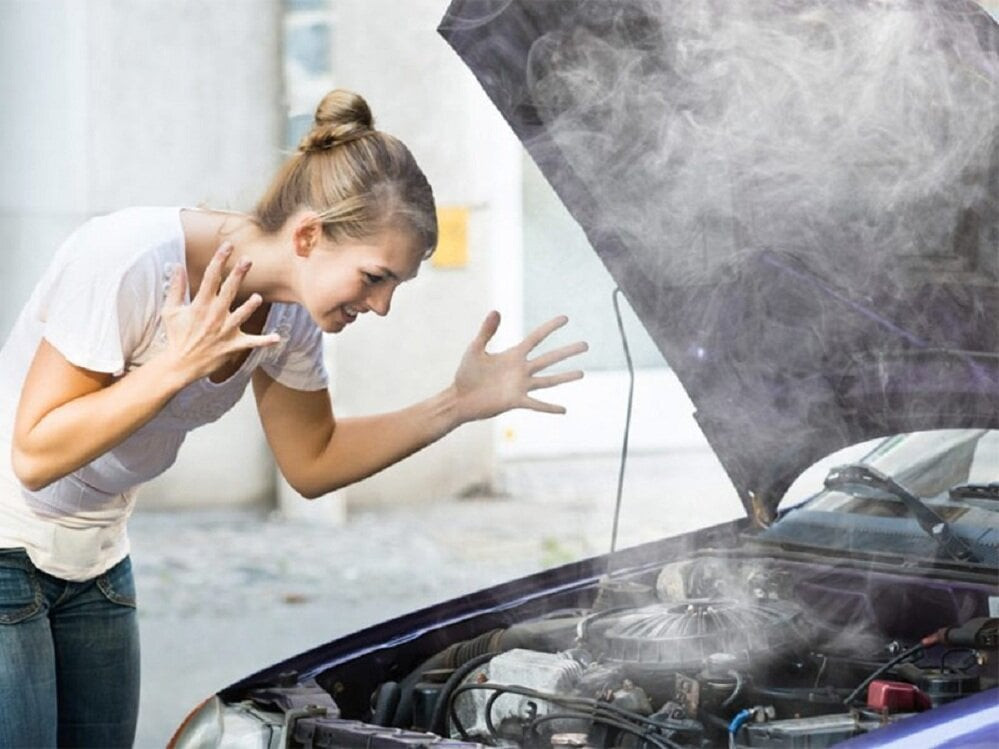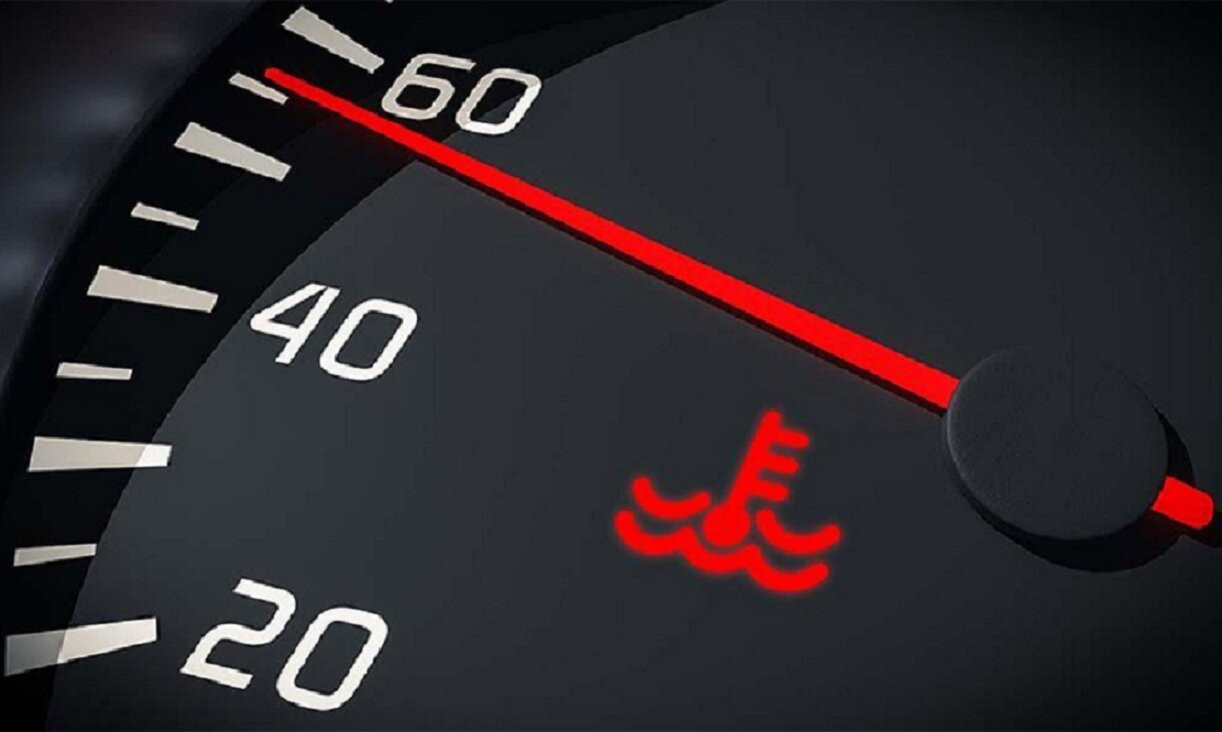Driving for too long will cause the car engine to generate too much heat, thereby increasing the risk of damage to other parts, so drivers need to know how to handle it to ensure safety.
In today's cars, the technical parameter panel behind the steering wheel will help the driver detect when the engine is overheating and needs to be handled immediately. When the car overheats, a red thermometer symbol will appear, with water waves below. At this time, the driver needs to stop the car immediately, do not try to run it will affect the related parts.

Moving for too long will cause the car engine to generate too much heat, thereby increasing the risk of damage to other parts.
Pull over to the side of the road
If your car engine overheats, you need to immediately pull over and turn on your hazard lights so other vehicles know that your car is broken down and can avoid it in time.
Check engine
Before checking the engine compartment, the driver opens the hood and waits about 5-10 minutes for all the excess heat to escape. After seeing the engine cool down, check the radiator by opening it slightly, the heat from inside will escape, then open it completely. Absolutely do not open it completely because boiling water will splash up and cause burns.
If the coolant level is not enough, add water so that this part can continue to work. However, in the middle of the desert, it is difficult to find water, so you should always prepare a bottle of water in the car for all situations. Using plain water is only a temporary solution. After returning home, the car owner needs to wash the water tank and use specialized coolant to cool, avoid residue that causes damage and blockage of the cooling system.
In case you cannot stop the car immediately
As a rule, when a car overheats, the first thing to do is to stop the car immediately. However, if the car is traveling on a crowded road and cannot stop immediately, it is necessary to take steps to cool the engine, such as opening all the windows, this will help the hot air to escape.
Next, turn off the air conditioner, turn on the heater and the radiator fan. Because the heating system uses the heat of the engine to warm the air in the car, when the heater is turned on, the system will take heat to warm the car, thereby helping to reduce the engine temperature.
Finally, the driver should turn on the emergency lights and quickly park the car in a safe location. If you are unsure or lack experience with the car, you should call the service advisor of the repair shop or a tow truck to take it to the garage for inspection.

Overheating vehicles will display a red thermometer icon with water waves below.
Lack of coolant
Car coolant has the effect of quickly transmitting heat, helping to cool the engine system when the car is operating. A car lacking coolant will seriously affect the cooling capacity, leading to the phenomenon of the car overheating quickly.
The cooling system operates in a closed circuit, so the coolant is rarely lost much. Therefore, if you see the coolant is lost quickly, it is very likely that the cooling system is having problems such as a leaky pipe, a worn plug on the engine hole, a torn radiator, a broken gasket, a cracked engine cylinder, etc. causing the coolant to leak.
Faulty thermostat
The car's thermostat is responsible for regulating the coolant that flows through the radiator, thereby cooling the engine during operation. Therefore, if the thermostat is faulty, it will affect the engine's cooling process. If not detected early, it can cause the car to overheat.
Fan failure
The engine fan is an important part of the cooling system that helps dissipate heat from the engine. A malfunctioning fan will greatly affect the cooling process, easily causing the vehicle to overheat because it is not cooled well.
Engine is low on oil
A lack of engine oil can also cause the engine to overheat. Car oil is responsible for lubricating the internal parts of the engine, helping to reduce friction (reduce wear) and cool the engine (reduce overheating). Therefore, if the car lacks engine oil, the internal parts of the engine will not be lubricated and cooled, leading to overheating.
The weather is too hot
In addition to the above causes, the car's engine can also be overheated due to the car being operated for too long under hot and high temperatures. This situation often occurs in older cars because the cooling system is not working properly, making the engine susceptible to overheating.
Due to the operating process
During operation, car owners do not regularly care for and maintain the vehicle, leading to some parts aging, corrosion, and using the wrong oil...
According to VTC News